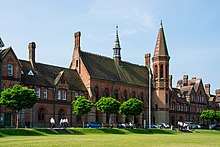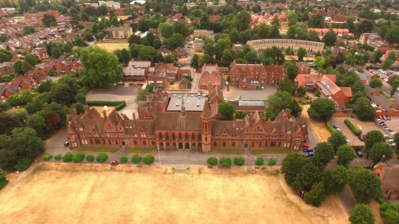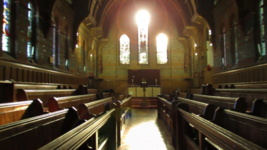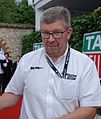Reading School
| Reading School | |
|---|---|
 | |
 Reading School | |
| Address | |
 | |
Erleigh Road , , RG1 5LW United Kingdom | |
| Coordinates | 51°26′54″N 0°57′18″W / 51.44833°N 0.95500°W |
| Information | |
| Type | |
| Motto | Floreat Redingensis (Latin: May Reading [School] flourish) |
| Religious affiliation(s) | previously Church of England |
| Established | 1125 1486 (refounding) |
| Founder | Henry VII |
| Department for Education URN | 136449 Tables |
| Ofsted | Reports |
| Headmaster | Chris Evans |
| Gender | Boys |
| Age | 11 to 18 |
| Enrolment | 1,104 |
| Houses |
|
| Colour(s) | Navy Blue, Silver |
| Publication | Floreat Redingensis |
| Boarding houses |
|
| Former pupils | Old Redingensians |
| CEO | A M Robson |
| Website | www |
Reading School is a state grammar school for boys with academy status in the English town of Reading, the county of Berkshire. It traces its history back to the school of Reading Abbey and is, thus, one of the oldest schools in England, although it closed for a few years in the 1860s. It is a state boarding school. There are no tuition fees for day pupils, and boarders only pay for food and lodging. Reading is one of the best state schools in the UK according to the GCSE and A-level tables and has consistently ranked in the top ten.[1][2]
History
[edit]Reading School was founded as part of Reading Abbey. The date of the Abbey's charter, 29 March 1125, is taken as the foundation date, despite the closure of the school in the 1860s.[3] This date makes it the 10th oldest school in England, although there are hints that there may have been a school running in Reading before this.[4]

In 1486, the school was refounded as a "Free Grammar School" ("free" here meaning teaching the free, or liberal, arts, not that no fees were paid) by Henry VII on the urging of the then Abbot, John Thorne. From at least this time, the School was housed in the former Hospitium of St John. The main building of the hospitium still exists, but the refectory, which once housed the schoolroom, was demolished in 1785 and Reading Town Hall now stands on the site.[5][6]
After the dissolution of Reading Abbey in 1539, the school fell under the control of the corporation of Reading, its status being confirmed by Letters Patent issued by Henry VIII in 1541. This was reconfirmed in the royal charter granted to the Corporation of Reading by Elizabeth I in 1560, which made the corporation liable for the salary of the headmaster and gave them the power of appointing him.
There were interruptions to schooling in 1665, when Parliament, forced out of London by the Great Plague, took over the schoolhouse. The English Civil War also interrupted, with the school being used as a garrison by royalist forces. The school prospered at the start of the nineteenth century; in 1830, when Richard Valpy retired from the post of headmaster, there were 120 pupils.[7] By 1866 disagreements between the town and school and problems with the lease on the school buildings had led to falling numbers. The school closed in the 1860s.[3]

| Reading School Act 1867 | |
|---|---|
| Act of Parliament | |
 | |
| Long title | An Act for the better Regulation of the Grammar School and John Kendricke's Loan Charity, Reading. |
| Citation | 30 & 31 Vict. c. 5 |
| Dates | |
| Royal assent | 12 August 1867 |
| Text of statute as originally enacted | |
The school re-opened, however, with the Reading School Act 1867 (30 & 31 Vict. c. 5) setting out its administration and funding. The foundation stone for new buildings in Erleigh Road, designed by Alfred Waterhouse (who also designed the Natural History Museum, London), was laid by the Prince of Wales Edward VII in 1870, and in 1871 the school moved in.[3] In 1915 Kendrick Boys' School (founded in 1875 from the legacy of John Kendrick), which had a large endowment but poor facilities, was taken over by Reading, which was poorly funded but had excellent facilities – this caused considerable controversy at the time but was ultimately seen as successful.[citation needed]
The Education Act 1944 saw the abolition of fees (apart from boarding charges), with the cost of education now being met by the local authority. The 1960s saw the rise of comprehensive education in England and Wales, but Reading was exempted in 1973 (along with the girls' grammar school in Reading, Kendrick) after a petition of over 30,000 local people (a third of the voters of Reading) was handed to the government.[citation needed]
On 6 July 2007 Reading School was officially designated as the landing site for the Thames Valley and Chiltern Air Ambulance when it needs to transport patients to the nearby Royal Berkshire Hospital. Previously, seriously injured or ill patients from the Reading area had to be flown either to Wexham Park Hospital near Slough, or to the John Radcliffe Hospital in Oxford for treatment. The new arrangement means that the school field can now be used for emergency touchdowns. Patients are transported by land ambulance from the school to the hospital's accident and emergency department across the road.[8] While this arrangement was only made official in 2007, the school field had been unofficially used on several occasions by the Thames Valley and Chiltern Air Ambulance in previous years.
The school became an academy in 2012.[9]
In 2020, the school was found to have discriminated against a visually-impaired child by not making adjustments to enable him to take the eleven-plus entrance examination.[10]
School site
[edit]
The current school site consists of a main block (with two wings), a Science block, the Page building, the John Kendrick building, South House, Music School (formerly known as Junior School) and a chapel. The main school building, the chapel, South House and the building to the east of South House have all been designated as Grade II listed buildings by English Heritage.[11][12][13][14]
The chapel is where the school's Christmas, Remembrance and Easter services take place, and every student attends once a week. The chapel has four groups of pews, facing towards the central aisle. Above the entrance is the organ, and at the far end is the altar and vestry.
Plans have been developed for improved sports and science facilities as part of the "1125 campaign". Work on improving science facilities began in 2015 and was completed in Spring 2017 as stated above. Work on the new sports facilities has begun, with a new fitness suite made on the location of the old squash courts next to chapel, and refurbishments on the gym and changing rooms completed.[15] Work to refurbish the Physics block began in 2022, finishing with an official reopening in early 2023.
International sites
[edit]The school established a subsidiary in 2018 to participate in its cooperation with Lunhua Education and Lujiazui Corporation to establish international schools with "fusion" curricula called Suzhou Reading School in China.[16][17] The first school, located on plot 2 in the town of Xushuguan in Suzhou New District, was planned to have a site area of 35,100 and construction area of 50,772 m2.[18] However, according to a report from Phoenix New Media, after completing construction in 2021, Reading School lost its license to operate there after failing its environmental assessment due to heavy soil pollution. The plot was reclassified as industrial land by the municipal Natural Resources and Planning Bureau in 2023.[19]
Notable "Old Redingensians" (former students)
[edit]- Sir Alexander Tilloch Galt, Father of the Canadian Confederation
- Ross Brawn, Formula One Managing Director of Motorsports
Deceased Old Redingensians (chronological order)
[edit]| Name | Year of birth | Year of death | Notable achievements |
|---|---|---|---|
| Sir Thomas White | 1492 | 1567 | Founder of St John's College, Oxford and Lord Mayor of London in 1553 |
| Sir Francis Moore | 1559 | 1621 | MP for Reading |
| John Blagrave | c.1561 | 1611 | Mathematician |
| William Laud | 1573 | 1645 | Chancellor of the University of Oxford 1629–1645, Archbishop of Canterbury, 1633–1645, beheaded in 1645 during the Civil War |
| John Kendrick | 1573 | 1624 | Elizabethan/Jacobean merchant and philanthropist |
| Daniel Blagrave | 1603 | 1668 | MP for Reading, Regicide (signatory of the death warrant of Charles I in 1649). Escaped to exile in Aachen at the Restoration in 1660 |
| Sir Constantine Phipps | 1656 | 1723 | Lord Chancellor of Ireland (1710–1714) |
| Henry Vansittart | 1732 | 1770 | Governor of Bengal (1759–1764) |
| Francis Annesley | 1734 | 1812 | MP for Reading (1774–1806), First Master of Downing College, Cambridge |
| Henry Addington, 1st Viscount Sidmouth[20] | 1757 | 1844 | MP, Prime Minister of the United Kingdom (1801–1804),[21] Chancellor of the Exchequer (1801–1804), Lord President of the Council (1805, 1806–1807, 1812), Home Secretary (1812–1822) |
| Henry Bright | 1784 | 1869 | MP for Bristol (1820–1830) |
| Thomas Noon Talfourd | 1795 | 1854 | MP for Reading (1835–1841, 1847–49), Judge and writer |
| Admiral Sir Charles Elliot KCB | 1801 | 1875 | British Royal Navy officer, diplomat and colonial administrator. Chief Superintendent of British Trade in China (1836–41), first Administrator of Hong Kong (1841), Governor of Bermuda (1846–54), Governor of Trinidad (1854–56), and Governor of Saint Helena (1863–70). |
| Horace William Wheelwright | 1815 | 1865 | Lawyer, hunter, naturalist and writer |
| Sir Alexander Tilloch Galt | 1817 | 1893 | Politician and a father of the Canadian Confederation, Member of the Canadian Parliament (1867–72), Inspector General of Canada, Canadian Minister of Finance (1867), Canadian High Commissioner to the United Kingdom (1880–83). Founder of the Alberta Railway and Coal Company and founding president of The Guarantee Company of North America. |
| Captain Hastings Harington | 1832 | 1861 | Awarded the Victoria Cross as a lieutenant with the Bengal Artillery for conspicuous gallantry in the relief of Lucknow, 1857; died at Agra having achieved the rank of captain. |
| Joseph Wells | 1855 | 1929 | Warden of Wadham College, Oxford 1913–1927, Vice-Chancellor of the University of Oxford 1923–1926 |
| Robert Hedley | 1857 | 1884 | English soldier and footballer, who captained the Royal Engineers team in the 1878 FA Cup Final. He was a centre-forward and was called up to the England squad against Scotland in 1878 and 1879. |
| General Sir Havelock Hudson GCB, KCIE | 1862 | 1944 | British Indian Army officer, commanded 8th Infantry Division during World War I. Member of the Council of India. |
| Lionel Cripps CMG | 1863 | 1950 | First Speaker of the Parliament of Southern Rhodesia |
| Sir Hugh Percy Allen | 1869 | 1946 | Director of the Royal College of Music, Professor of Music in the University of Oxford |
| Herbert Leader Hawkins FRS (elected 1937) | 1887 | 1968 | President of the Palaeontological Society, professor of palaeontology, University of Reading, authority on sea urchins |
| Major-General Charles Fullbrook-Leggatt CBE, DSO, MC | 1889 | 1972 | British army officer who served in both World Wars. Commanded the 61st Infantry Division |
| William Costin | 1893 | 1970 | President of St John's College, Oxford, Proctor of Oxford University. |
| Major General David Tennant Cowan CB, CBE, DSO & Bar, MC | 1896 | 1983 | British Army Officer in World War I and World War II. Led the 17th Indian Infantry Division during the Burma campaign. |
| Dom Christopher Butler O.S.B | 1902 | 1986 | A Benedictine Monk of Downside Abbey, Languages Scholar, Historian, Scripture Scholar, Theologian, Catholic Priest, Abbot of Downside, Abbot Primate of the English Benedictine Congregation, Auxiliary Bishop in the Archdiocese of Westminster, and the most prominent English reformer at the Second Vatican Council. |
| Arthur Negus OBE | 1903 | 1985 | Broadcaster and antiques expert |
| Malcolm Fewtrell | 1909 | 2005 | Detective Chief Superintendent who led the initial investigation into the Great Train Robbery in 1963. |
| Norman Gash CBE | 1912 | 2009 | Vice-Principal of the University of St Andrews (1967–1971). Historian, professor of modern history, who wrote a two-volume biography of Sir Robert Peel. |
| John Boulting | 1913 | 1985 | Film director and producer known for a popular series of satirical comedies in the 1950s and 1960s along with his brother, Roy Boulting. |
| Roy Boulting | 1913 | 2001 | Film director and producer known for a popular series of satirical comedies in the 1950s and 1960s along with his brother, John Boulting. |
| Horace Edgar "Tom" Dollery | 1914 | 1987 | England national cricketer and Warwickshire county cricket captain. |
| Basil Lam | 1914 | 1984 | Early Music scholar, harpsichordist, Head of Classical Music for BBC |
| John Minton | 1917 | 1957 | Artist, lecturer and teacher |
| George William Series FRS | 1920 | 1995 | Physicist, notable for his work on the optical spectroscopy of hydrogen atoms; Professor of Physics, Reading University (1968–1982) |
| Sir Clifford Charles Butler FRS | 1922 | 1999 | Physicist, best known as the co-discoverer of hyperons and mesons, Vice-Chancellor of Loughborough University (1975–1985) |
| Sir Douglas Lowe GCB, DFC, AFC | 1922 | 2018 | Pilot, Air Chief Marshal in the Royal Air Force |
| J. L. Ackrill | 1921 | 2007 | Professor of Classics at the University of Oxford. Philosopher and classicist, specialising in Ancient Greek philosophy. |
| Sir Richard Body | 1927 | 2018 | MP (1955–1959, 1966–2001), President of the Anti-Common Market League |
| Lord Roper of Thorney Island | 1935 | 2016 | MP for Farnworth (1970–1983), House of Lords Chief Whip, Liberal Democrats (2001–2005). |
| Sir Clive Sinclair | 1940 | 2021 | Entrepreneur and inventor. |
| Lord McKenzie of Luton | 1946 | 2021 | Member of the House of Lords (2004–2021). |
Living Old Redingensians (alphabetical order)
[edit]Notable headmasters
[edit]
- 1588–1589: Thomas Braddock
- 1781–1830: Richard Valpy (1754–1836)
- 1871–1877: Thomas Henry Stokoe
Inspections and awards
[edit]An OFSTED report[when?] concluded that "examination results place the school in the top five per cent nationally", "Pupils' attitudes to learning are outstanding" and "The school goes to exceptional lengths to broaden and enrich the education of all pupils". The 2005 Key Stage 3 results were both the best in the country for value-added and for the average points score of each student.[26]
In the 2004 school league tables for England (including fee-paying schools), it came eighth for GCSE-level results (average 602.5 points), 106th for A-level results (average 409.3 points) and 170th for value-added between ages 11 and 16 (score of 1037.7 compared with a baseline of 1000).[citation needed] It has recently[when?] become a DFES specialist school for the Humanities, specialising in English,[citation needed] Geography and Classics – the first school to specialise in Classics – despite entry being selected by Mathematics and verbal and non-verbal logic ability.
In 2005 the school was awarded the Sportsmark gold award for a four-year period. In the same year Reading was one of just 35 schools nationally to be made a Microsoft Partner School.[27]
In 2007, the school was identified by the Sutton Trust as one of only 20 state schools among the 100 schools in the UK responsible for a third of admissions to Oxford and Cambridge Universities over the five preceding years. 16.0% of pupils went to Oxbridge and a 62.1% in total went to universities identified by the Sutton Trust as "top universities".[28] In July 2011, the school was further identified by the Sutton Trust as the third highest state school, and among the top 30 schools in the country, for proportion of higher education applicants accepted at Oxford and Cambridge Universities. The report found that 16.7% of pupils were accepted to Oxbridge and 81.5% were accepted to the highly selective Sutton Trust 30 universities over the previous three years.[29]
Reading School was given the "State School of the Year" award by The Sunday Times newspaper in 2010 and 2019, in recognition of the school's academic achievements and community orientated ethos.[30]
Subjects taught
[edit]| Subject | Taught at KS3 | Taught at KS4 | Taught at Sixth Form |
|---|---|---|---|
| Ancient History Classical Civilisation | No | Yes | Yes |
| Art | Compulsory | Yes | Yes |
| Biology | Compulsory | Compulsory | Yes |
| Chemistry | Compulsory | Compulsory | Yes |
| Computer Science | Compulsory | Yes | Yes |
| Drama Theatre Studies | Compulsory | Yes | Yes |
| Economics | No | Yes | Yes |
| Electronics | No | Yes | No |
| English | Compulsory | Compulsory (GCSE English Language and GCSE English Literature) | Literature only |
| French | Compulsory in Year 7[1] | Yes[2] | Yes |
| Geography | Compulsory | Yes | Yes |
| German | Compulsory in Year 7[1] | Yes[2] | Yes |
| History | Compulsory | Yes | Yes |
| Latin | Compulsory[2] | Yes[2] | Yes |
| Mandarin Chinese | Yes [1] | Yes | No |
| Mathematics[3] | Compulsory | Compulsory | Yes (A-Level Mathematics and Further Mathematics offered) |
| Music | Compulsory | Yes | Yes |
| Philosophy Religious Studies | Compulsory (as Religious Studies) | Compulsory[4] | No |
| Physical Education | Compulsory | Yes[5] | Yes[5] |
| Physics | Compulsory | Compulsory | Yes |
| PSHE[6] | Compulsory | Compulsory | Compulsory |
| Spanish | Compulsory in Year 7[1] | Yes[2] | Yes |
| Floreat (Student Leadership)[6] | Compulsory | Compulsory | No |
1.^ ^ ^ ^ French, German, Spanish and Latin are compulsory in Year 7, while Mandarin can be chosen to replace a language except Latin. In Year 8 students must take 2 modern languages and Latin.
2.^ ^ ^ ^ At least one ancient or modern language must be taken for the GCSEs.
3.^ Additional Maths is taken by the top four sets at the same time as their GCSEs. Further Maths is optional at A Level, with some students being able to take it in one block with Maths.
4.^ The top half of the year take an externally-assessed AS-level Philosophy exam at the end of Year 11. Those who score a B or higher can either opt-out of the subject, continue onto the A2 or redo the exam the following year. Those who didn't score a B or higher can redo the exam the following year.
5.^ ^ In the sixth form, P.E. can optionally be taken as an examined A-Level. Those that do not do this must still take part in games weekly, though this is not examined or graded in any way, or must take part in Community Service during Games lessons. In Years 10 and 11, certain students are given the option of taking the GCSE as an additional subject. All students must complete Games lessons.
See also
[edit]- List of the oldest schools in the United Kingdom
- List of the oldest schools in the world
- Reading Abbey Girls' School
- List of English and Welsh endowed schools (19th century)
- List of international schools in China
References
[edit]- ^ Clark, Alex; Gilbert, Dominic (13 August 2021). "The best secondary schools in the UK, according to GCSE results league table". The Telegraph.
- ^ "Parent Power 2022: Best UK schools guide and league table".
- ^ a b c Phillips, Daphne (1980). The Story of Reading. Countryside Books. p. 138. ISBN 0-905392-07-8.
Reading Grammar School, which had fallen on bad times and had been closed in the 1860s, was revived and reopened in 1871 in an impressive new building in Erleigh Road, of which Alfred Waterhouse was the architect. The Prince of Wales laid the foundation stone in 1870
- ^ Michael Naxton (1986). The History of Reading School. Ringwood, Hampshire: Pardy Printers.
- ^ Phillips, Daphne (1980). The Story of Reading. Countryside Books. p. 42. ISBN 0-905392-07-8.
the lofty refectory of the former abbey hospitium, the ground floor of which had been used since about 1486 as the schoolroom of Reading School
- ^ Phillips, Daphne (1980). The Story of Reading. Countryside Books. p. 88. ISBN 0-905392-07-8.
In 1785-6 the old hall was taken down
- ^ Phillips, Daphne (1980). The Story of Reading. Countryside Books. p. 91. ISBN 0-905392-07-8.
By the time he retired in 1830 he had increased the number of pupils at the school to 120
- ^ Reading School – "New Landing Site for Air Ambulance". The South Central Ambulance Service NHS Trust Archived 27 September 2007 at the Wayback Machine
- ^ Norris, Frank (2012). "Academy conversion and predecessor schools". Ofsted. Retrieved 9 July 2023.
- ^ Adams, Richard (9 September 2020). "Grammar school discriminated against visually impaired child, tribunal finds". The Guardian. Retrieved 9 July 2023.
- ^ Main school building, Images of England reference no. 38922
- ^ Lecture Theatre at Reading School, Images of England reference no. 38923
- ^ South House, Images of England reference no. 38924
- ^ Building to the east of South House, Images of England reference no. 38925
- ^ Student
- ^ "Hello! Suzhou Reading School!" (Press release). Suzhou Lunhua Education Group. 22 December 2020.
- ^ Vale, Steve (October 2022). "Governors Annual Report to Parents 2021/22". Reading School.
- ^ "2018 Suzhou Reading School Startup". WT Partnership (Asia). 14 December 2018.
- ^ Chen, Wenli (8 November 2023). Wang, Tingting (ed.). "陆家嘴公司巨资购入"毒地" 实探 :商住全面停工停售".
- ^ "200 invalid-request". www.reading-school.co.uk. Retrieved 30 August 2019.
- ^ "Henry Addington, 1st Viscount Sidmouth – History of government". history.blog.gov.uk. October 2015. Retrieved 30 August 2019.
- ^ "Damian Green: May's loyal political friend and pro-EU advocate". The Guardian. 11 June 2017.
- ^ "Chancellor of the Exchequer | the Gazette".
- ^ "Print | British Museum".
- ^ "The Mirror of Literature, Amusement, and Instruction". 1838.
- ^ "Grammar boys are simply the best". Reading Evening Post. 30 March 2006.
- ^ Andrew Linnell. The Headmaster's Letter. The Old Redingensian, May 2005, p2 (PDF). Archived 21 February 2007 at the Wayback Machine
- ^ "University Admissions by Individual Schools" (PDF). Sutton Trust. 2007. Archived from the original (PDF) on 25 February 2009.
{{cite journal}}: Cite journal requires|journal=(help) - ^ "Degrees of Success – University Chances by Individual School" (PDF). Sutton Trust. 2011. Archived from the original (PDF) on 17 December 2011.
{{cite journal}}: Cite journal requires|journal=(help) - ^ "Schools of the Year – State Secondary School of the Year 2010". The Sunday Times. 2010. Archived from the original on 7 March 2013.
Further reading
[edit]- Michael Naxton. The History of Reading School. Ringwood, Hampshire: Pardy Printers, 1986.
- John Oakes and Martin Parsons. Reading School: The First 800 Years. Peterborough: DSM, 2005. ISBN 0-9547229-2-2.
- John Oakes and Martin Parsons. Old School Ties: Educating for Empire and War. Peterborough: DSM, 2001. ISBN 0-9536516-6-5. (The stories of Old Redingsians in World War I.)
- A History of Cricket at Reading School, 1987.


 French
French Deutsch
Deutsch









